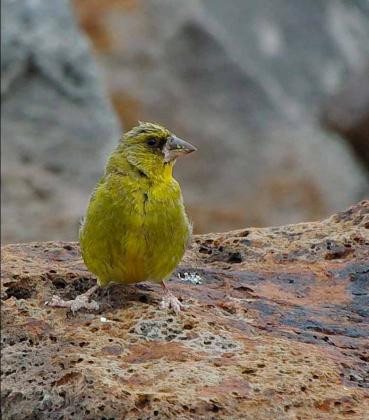A range of teacher professional learning programs will be developed to accompany the Biodiversity of the Western Volcanic Plains online outreach...


Common Greenfinch
Chloris chloris
Breeds September-December. Builds a cup-shaped nest in introduced trees.
| Details | Description |
| Type | Bird |
| Group | Finches and Sparrows |
| Former Scientific Name | Carduelis chloris |
| Other Common Names | European Greenfinch |
| Identifying Characteristics | |
| Distinctive Markings | The male is yellow-green overall with yellow wing patches and yellow on the tail. |
| Diet | Omnivore, feeding on invertebrates, seeds and grain. |
| Habitat | Farmland, roadsides, parks, gardens, coastal dunes and orchards. |
| Native Status | Introduced |
| Sounds | Canary like trills and chattering "chwitchit-chit-chit-chit". |
| Taxonomy | |
| Phylum | Chordata |
| Class | Aves |
| Order | Passeriformes |
| Family | Fringillidae |
| Genus | Chloris |
| Species | chloris |

Distribution maps indicate current and historic locations where species have been sighted.
Source: Atlas of Living Australia
| Conservation Status | |
| DEPI Advisory List | Not listed |
| FFG Act | Not listed |
| EPBC Act | Not listed |
The conservation status of species is listed within Victoria and Australia.
The Department of Environment and Primary Industry (DEPI) Advisory List consists of non-statutory advisory lists of rare or threatened flora and fauna within Victoria.
The Flora and Fauna Guarantee Act 1988 (FFG Act) lists threatened species in Victoria. Under the Act, an Action Statement is produced for each listed species.
The Environment Protection and Biodiversity Conservation Act 1999 (EPBC Act) is the Australian Government’s key piece of environmental legislation, listing nationally threatened native species and ecological communities.



